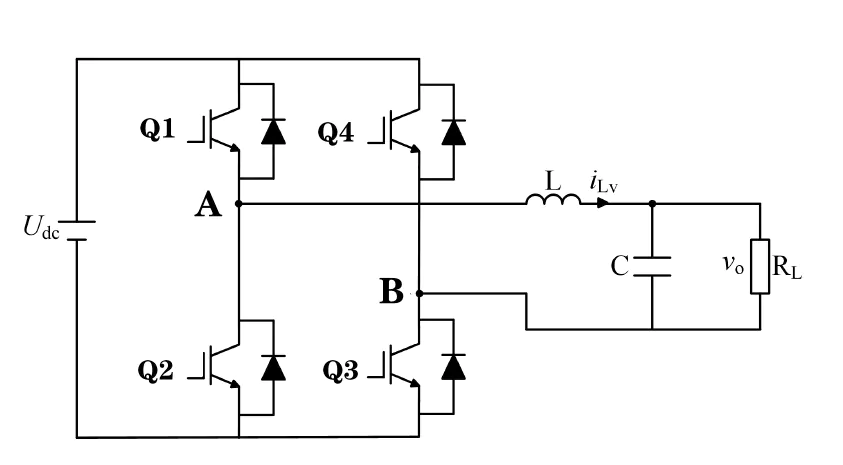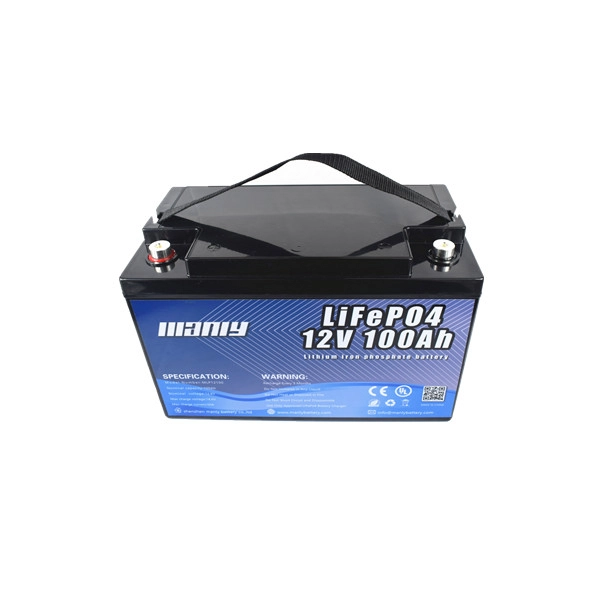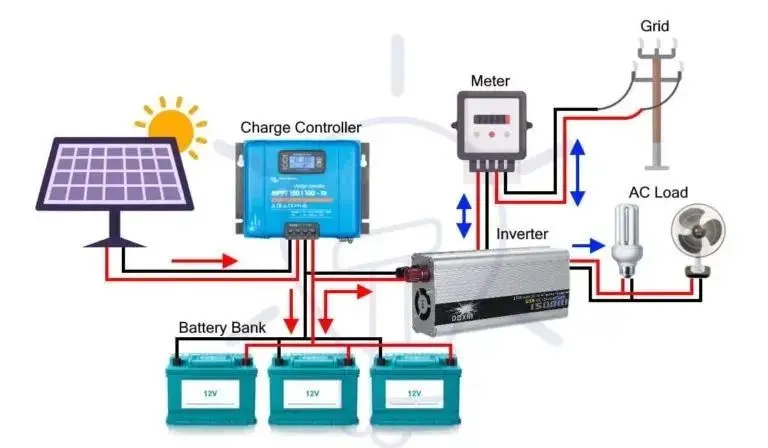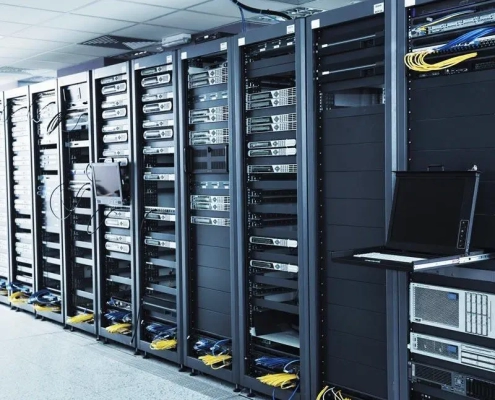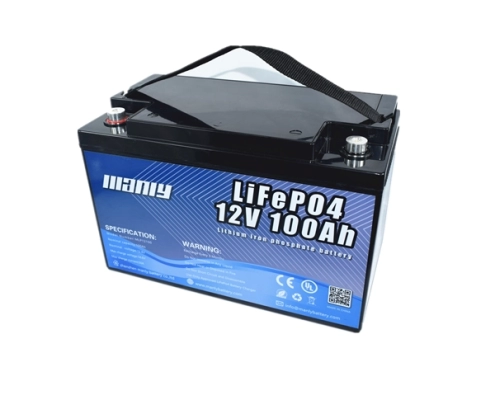Inverter Size Calculator: How to Use and Interpret
When considering the compatibility of a 100Ah lithium battery with a 1000W inverter, the Inverter Size Calculator becomes a crucial tool. It’s designed to accurately assess your system’s needs, helping you determine the maximum inverter size your 100Ah battery can handle. This is based on your battery voltage, inverter efficiency, and power factor, ensuring you don’t overload your battery.
What Can You Calculate with This Tool?
Maximum Inverter Size: Input the battery voltage, inverter efficiency, battery capacity, and power factor, and the calculator will give you the maximum inverter size that your battery can support. This ensures you use an inverter that matches your battery’s capabilities and avoids overloading it.
Ensure Compatibility: For those unsure about what inverter to choose for their setup, this versatile calculator offers an easy way to determine whether your current 100Ah battery is sufficient or needs a larger inverter. You can optimize your energy use by adjusting the values based on your unique battery setup, ensuring that the calculator caters to your specific needs.
How It Works
Battery Voltage (V): Enter your battery’s voltage (e.g., 12V, 24V). The calculator uses this to determine the total energy available from your battery.
Inverter Efficiency (%): Your inverter’s efficiency rate indicates how much energy is actually used for powering your devices after conversion losses. Typically, this is around 80-95%. Inputting this ensures a more realistic calculation.
Capacidad de la batería (AH): The default is 100Ah, but you can change this value based on your battery capacity. This value represents how much energy your battery can store.
Power Factor: This is important when considering AC loads. It accounts for how efficiently the inverter supplies power to the connected appliances. For most devices, a power factor of 1.0 is standard.
Once these values are entered, the calculator will determine the maximum inverter size based on the available energy and efficiency. This ensures you avoid selecting an inverter that exceeds your battery’s capabilities.
Para obtener más asistencia e información detallada, visite nuestro sitio web y comuníquese con nuestro servicio al cliente experto enBatería MANLY Contáctenos.
Comprender los conceptos básicos del inversor
1. Explique qué es un inversor eléctrico y su función
An electric inverter is a device that converts direct current (DC) into alternating current (AC). This is important because many household appliances and electronic devices run on AC power. The purpose of a power inverter is to make it possible to use these devices with a DC power source, such as a battery or solar panel.
Inverters use a combination of electronic components to change the flow of electricity. They take the DC power, usually from a battery, and use it to create AC power. This AC power can then be used to run various devices like TVs, computers, and even kitchen appliances. The main parts of an inverter include the inverter bridge, control logic, and filtering circuit.
For example, if you have a 12V battery, the inverter can convert this 12V DC into 120V AC, the standard voltage for household outlets in the United States. This allows you to use your battery to power devices typically plugged into an AC outlet.
In electrical terms, an inverter is a device that changes direct current (DC) to alternating current (AC). This conversion process involves an alternating current inverter system that utilizes several key components, including the inverter bridge, control logic, and filtering circuit.

2. Breve descripción general de diferentes tipos de inversores de energía para hogares
There are several inversores de potencia para hogares, cada uno diseñado para diferentes aplicaciones y necesidades. Aquí hay algunos tipos comunes:
- Inversores de onda sinusoidal pura: Estos proporcionan una ola de electricidad suave y consistente, similar a lo que obtiene de la red eléctrica. Son ideales para productos electrónicos sensibles como computadoras y equipos médicos.
- Inversores de onda sinusoidal modificada: Estos son más simples y más baratos que los inversores de onda sinusoidal pura, pero producen una onda eléctrica menos lisa. Son adecuados para dispositivos menos sensibles, como herramientas eléctricas y electrodomésticos.
- Inversores de conexión a red: These solar power systems are designed to feed electricity back into the grid. They help reduce electricity bills by allowing homeowners to use solar power during the day and grid power at night.
- Inversores portátiles: These are small, lightweight inverters that can be used for camping, in cars, or emergencies. They are perfect for charging small devices like phones and laptops.
- Inversores híbridos: These inverters can work as standalone and grid-tie inverters. They are versatile and can be used in various applications, including solar power systems.
A power inverter allows the use of a wide range of devices with different power needs, whether you are at home, on the road, or off the grid. Understanding the various types of inverters and their uses can help you choose the right one for your needs.
For instance, a 1000 watt inverter is a versatile choice for many home applications. It can power several household devices, such as a TV or a small refrigerator, as long as the total power consumption does not exceed 1000 watts. This makes it a practical choice for a wide range of needs.

Componentes de un inversor
The main components of an inverter play crucial roles in its operation. These include the DC input, which is the battery or solar panel; the inverter bridge that switches the DC to AC; and the output, where the AC power is supplied to the devices. The control logic ensures that the inverter operates efficiently, and the circuito de filtrado smooths out the AC output to make it usable for all devices.
¿Cómo funciona un inversor de CA?
Uninversor de CA converts the battery’s DC power into a high-frequency AC signal. This signal is then transformed into the desired voltage using a transformer. Finally, the high-frequency AC is converted back to a lower-frequency AC that matches the household power grid, usually 60Hz, in the United States. This process ensures that the output from the inverter is compatible with standard household appliances.
Aplicaciones del inversor
Inverters are used in many applications, including solar power systems, which convert the DC power from solar panels into AC power for home use. They are also used in off-grid systems to provide power in remote locations and emergency power systems to provide backup power during outages. Electricity inverters are also standard in RVs and boats to provide power for appliances and electronics while on the move.
In conclusion, an electric inverter is crucial for converting DC to AC power, making it possible to use various electronic devices with different power sources. Many inverters are available, each suited for other applications, ensuring you can find the right inverter for your needs. Understanding the basics of how inverters work and the types available can help you decide when to choose the right inverter for your specific needs.
¿Se ejecutará una batería de litio de 100Ah un inversor de 1000W?
Understanding whether a 100Ah lithium battery can run a 1000 watt inverter requires examining the compatibility and practical scenarios where this setup is adequate.
1. Compatibilidad de una batería de litio de 100Ah con un inversor de 1000 vatios
To determine if a 100Ah lithium battery can power a 1000 watt inverter, we must understand the relationship between the battery’s capacity, voltage, and power demand. A 100Ah lithium battery provides 100 ampere-hours of current. If the battery voltage is 12V, the total energy capacity is:
12V×100Ah=1200¿Qué?
AEl inversor de 1000 vatios necesita 1000vatios de potencia por hora. Para averiguar cuánto tiempo la batería puede alimentar al inversor, dividimos la energía total de la batería por la demanda de energía del inversor:
1200¿Qué?÷1000W=1.2horas
This theoretical calculation shows that the battery can run the inverter for about 1.2 hours, but this is under ideal conditions. Factors such as inverter efficiency and battery discharge rates can affect this duration in real-world scenarios.
La eficiencia del inversor generalmente varía del 70% al 90%. Si asumimos una eficiencia del 80%, la energía utilizable real de la batería sería:
1200¿Qué?×0.8=960¿Qué?
Entonces, el tiempo de ejecución práctico sería:
960¿Qué?÷1000W=0.96horas
Por lo tanto, con un inversor eficiente del 80%, una batería de litio de 100Ah puede ejecutar un inversor de 1000 vatios durante aproximadamente 0.96 horas, o poco menos de 1 hora.
2. Ejemplos y escenarios
Veamos algunos ejemplos prácticos donde esta configuración podría usarse de manera efectiva:
- Camping o actividades al aire libre: If you’re using the battery to power lights, small kitchen appliances, or charging devices, the short run time might be sufficient. For instance, running a 1000W electric grill or a coffee maker for short periods can be pretty convenient.
- Energía de emergencia: In a power outage, a 100Ah lithium battery connected to a 1000 watt inverter can keep essential devices running. You could power a few lights, charge phones, or even briefly run a small refrigerator.
Por ejemplo, en un escenario de emergencia, es posible que deba alimentar múltiples dispositivos simultáneamente. Supongamos lo siguiente:
- Luces led: 100W
- Ordenador portátil: 50W
- Cargador de teléfono: 10W
La demanda total de energía es:
100W+50W+10W=160W
Usando los cálculos anteriores, con la energía utilizable de 960Wh:
960¿Qué?÷160W=6horas
In this scenario, your 100Ah lithium battery could power these devices for about 6 hours. This setup is convenient for short-term use during power outages.
En conclusión, mientras que una batería de litio de 100Ah puede ejecutar un inversor de 1000 vatios, la duración se limita a menos de una hora en condiciones realistas. Esta configuración es más efectiva para usos a corto plazo o de emergencia. Cuando planea usar dicha configuración, es crucial tener en cuenta la eficiencia del inversor y las necesidades de energía reales de sus dispositivos para garantizar un rendimiento confiable.
¿Puedo ejecutar un inversor de 2000W con una batería de 100Ah?
1. Examine la viabilidad de usar un inversor de 2000 W con una batería de litio de 100AH
We must first examine the power requirements and capacity to understand if a 100Ah lithium battery can power a 2000W inverter. A 100Ah lithium battery at 12V provides:
12V×100Ah=1200¿Qué?
Un inversor de 2000 W exige 2000 vatios de energía por hora. Para averiguar cuánto tiempo la batería puede ejecutar el inversor, dividimos la energía total de la batería por la demanda de energía del inversor:
1200¿Qué?÷2000W=0.6horas
This theoretical calculation shows the battery can run the inverter for about 0.6 hours, or approximately 36 minutes. However, this is under ideal conditions. Real-world factors like inverter efficiency and battery discharge rates will impact this duration.
La eficiencia del inversor generalmente varía del 70% al 90%. Suponiendo una eficiencia del 80%, la energía utilizable real de la batería sería:
1200¿Qué?×0.8=960¿Qué?
Entonces, el tiempo de ejecución práctico sería:
960¿Qué?÷2000W=0.48horas
Thus, with an 80% efficient inverter, a 100Ah lithium battery can run a 2000W inverter for approximately 0.48 hours, or just under 30 minutes.
2. Destaca las limitaciones y consideraciones para esta configuración
While a 100Ah lithium battery can technically power a 2000W inverter, the duration is limited, making it impractical for continuous or long-term use. Here are some key considerations and limitations:
- Battery Strain: Running a 2000W inverter significantly strains a 100Ah battery, potentially reducing its lifespan. High power demands can cause the battery to heat up and degrade faster.
- Efficiency Losses: Inverters have efficiency losses. Low-frequency inverters typically consume between 50 and 100W of static power. Even without any load, a low-frequency inverter can drain the battery quickly. For example, with a static consumption of 75W, the inverter alone would consume 0.075Wh per hour. Over 10 hours, this could deplete a significant portion of the battery’s capacity.
- High-Frequency Inverters: High-frequency pure sine wave inverters are more efficient, with static power consumption around 8W. This makes them better suited for small off-grid systems. With a high-frequency inverter, the same 100Ah battery could last up to 100 hours on static load alone. With higher efficiency (up to 94%), the battery consumption is much lower during operation.
- Power Requirements: A 2000W inverter running at full capacity would consume more power than a 100Ah lithium battery can provide for a sustainable period. A larger capacity battery, such as a 200Ah battery, would be more appropriate for continuous use.
Ejemplo práctico
Consider a scenario where you need to power multiple devices. For instance:
- Refrigerador: 150W
- Ordenador portátil: 50W
- LED Lights: 30W
- Phone Charger: 10W
La demanda total de energía es:
150W+50W+30W+10W=240W
Using the 100Ah lithium battery with a 2000W inverter, the runtime would be:
960¿Qué?÷240W=4horas
In this practical example, running multiple devices with lower power consumption can extend the battery life, but running a full 2000W inverter load is not feasible for long durations.
In conclusion, while a 100Ah lithium battery can technically run a 2000W inverter, the limitations in runtime and efficiency make it impractical for sustained use. It’s crucial to consider these factors and possibly opt for a higher capacity battery to ensure the battery’s and inverter’s reliable performance and longevity.

Consejos de instalación y seguridad para un inversor de 1000 vatios
1. Guía paso a paso sobre cómo instalar un inversor de 1000 vatios
Installing a 1000 watt inverter involves several key steps to ensure safe and efficient operation. Follow this guide for a smooth installation process:
- Pre-Installation Check: Before starting, inspect the inverter for any damage that may have occurred during shipping. This ensures that you’re starting with a fully functional unit.
- Choose a Suitable Location: Select an installation site away from direct sunlight, heat sources, and moisture. The location should be well-ventilated to keep the inverter cool. Avoid placing it near other electronic devices to prevent interference. Ensure the site can support the inverter’s weight and allow enough space for ventilation and maintenance.
- Electrical Safety Measures: Cover the solar panels with opaque material before making any electrical connections or disconnecting the DC circuit breaker. This prevents dangerous voltages from being generated during installation.
- Mount the Inverter: Secure the inverter on a stable surface, such as a wall or a sturdy shelf. Ensure it is a few inches above the ground to protect it from potential water damage. Use appropriate mounting hardware to ensure it is securely attached.
- Connect the Battery: Position the battery close to the inverter to minimize voltage drop. Use cables with appropriate gauges and sound insulation. Connect the battery’s positive terminal to the inverter’s positive input and the negative terminal to the negative input.
- Connect the Solar Panels (if applicable): If using solar panels, connect them to the inverter following the manufacturer’s instructions. Ensure all connections are tight and secure.
- Ground the Inverter: Proper grounding is essential for safety. Use a grounding wire to connect the inverter’s ground terminal to a suitable grounding point.
- Final Checks: Before powering on, double-check all connections. Please ensure the wires are correctly and securely connected to prevent short circuits or other electrical issues.
2. Medidas de seguridad, incluido el cableado adecuado y la evitación de las sobrecargas
Ensuring safety during and after the installation of your 1000 watt inverter is crucial. Here are some essential safety measures:
- Professional Installation: While it’s possible to install an inverter yourself, it’s advisable to hire a professional with experience in inverter installations. This minimizes risks and ensures that the installation meets all safety standards.
- Use Insulated Cables: Use standard insulated wires to prevent short circuits and potential fire hazards. The cables should be of the correct gauge to handle the power load.
- Regular Maintenance: Conduct regular checks on the inverter and battery. Inspect the battery’s water level every three months and lubricate the terminals to prevent rust. Regularly clean the inverter and check the cooling fan to ensure it operates correctly.
- Avoid Overloading: Do not connect high-load appliances, such as refrigerators or motors, to the inverter. Overloading can damage the inverter and potentially cause power outages. Always check the power specifications of appliances before connecting them to the inverter.
- Monitor Static Power Consumption: Be aware of the inverter’s static power consumption. For example, a low-frequency inverter typically consumes between 50 – 100W when idle, while a high-frequency pure sine wave inverter consumes around 8W. This knowledge helps manage battery life more effectively.
- Follow Manufacturer Guidelines: Read all instructions in the inverter’s manual. This helps maintain the inverter’s warranty and ensures it operates safely and efficiently.
- Proper Ventilation: Ensure the inverter’s location is well-ventilated to prevent overheating. High temperatures can reduce the inverter’s efficiency and lifespan.
- Emergency Precautions: Keep spare fuses handy. Having replacements on hand can reduce downtime in the event of a fuse blowing. Always disconnect the inverter from the power source before replacing any fuses.
- Regular Inspections: Regularly check all connections and terminals for signs of wear or damage. Replace any damaged wires immediately to maintain safe and efficient operation.
By following these steps and safety measures, you can ensure a successful installation and long-term operation of your 1000 watt inverter. Proper installation and maintenance are key to maximizing the inverter’s performance and ensuring the safety of your electrical system.
Conclusión
In conclusion, while a 100Ah lithium battery can run a 1000 watt inverter, it is essential to understand this setup’s limitations and practical applications. The battery can power the inverter for about an hour under ideal conditions, making it suitable for short-term or emergency use. Regular maintenance and proper installation are crucial for safe and efficient operation. By considering factors like inverter efficiency and actual power needs, users can maximize the performance of their 100Ah lithium battery with a 1000 watt inverter, ensuring reliable power whenever and wherever it is needed.
